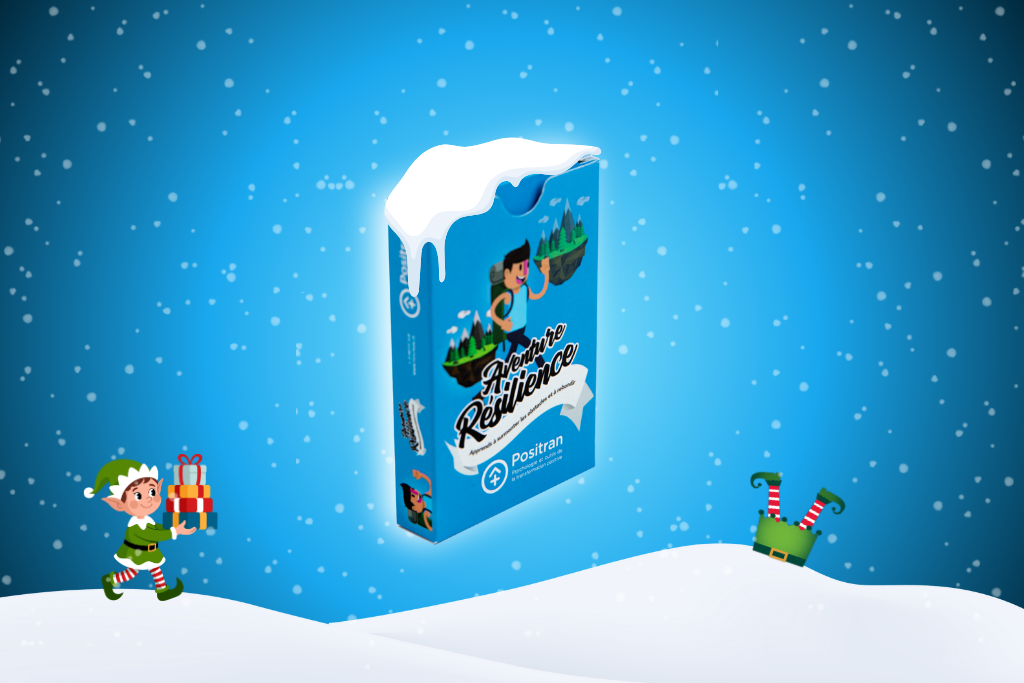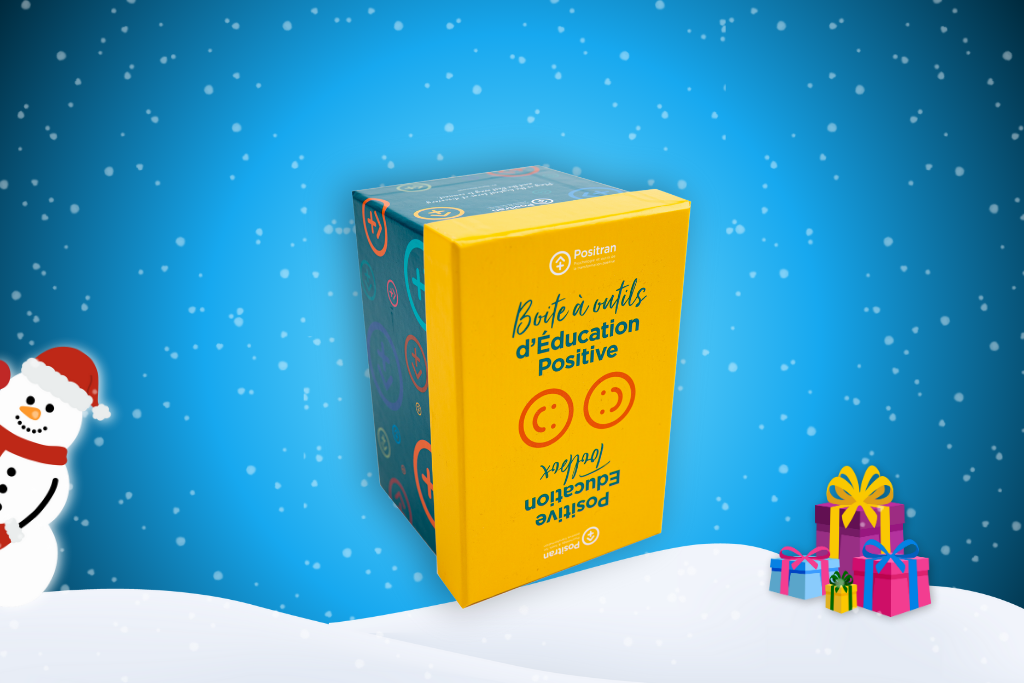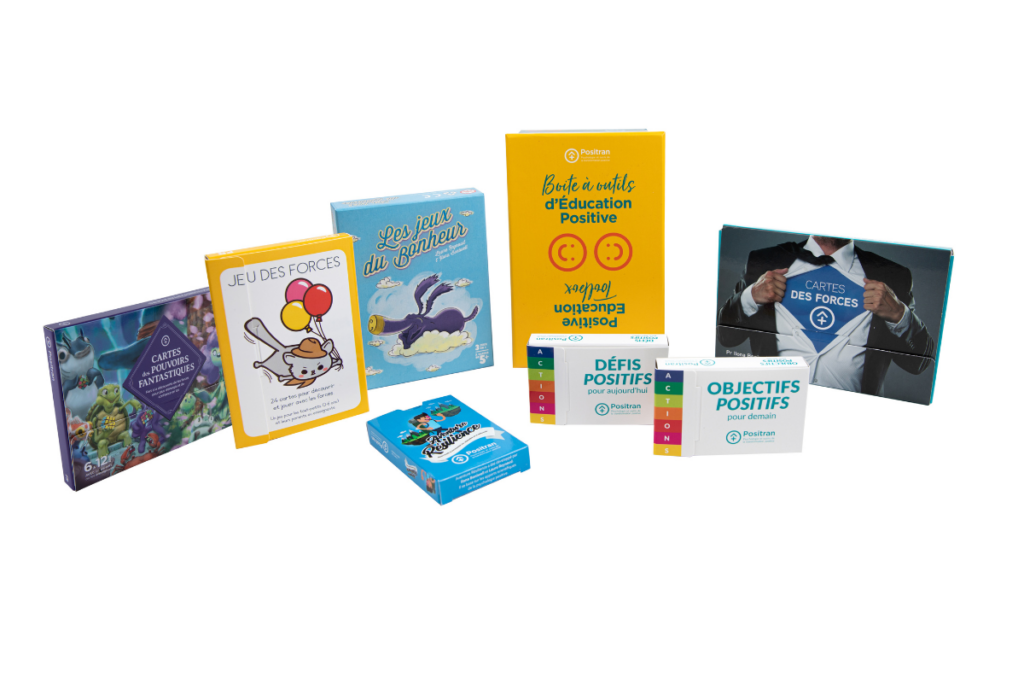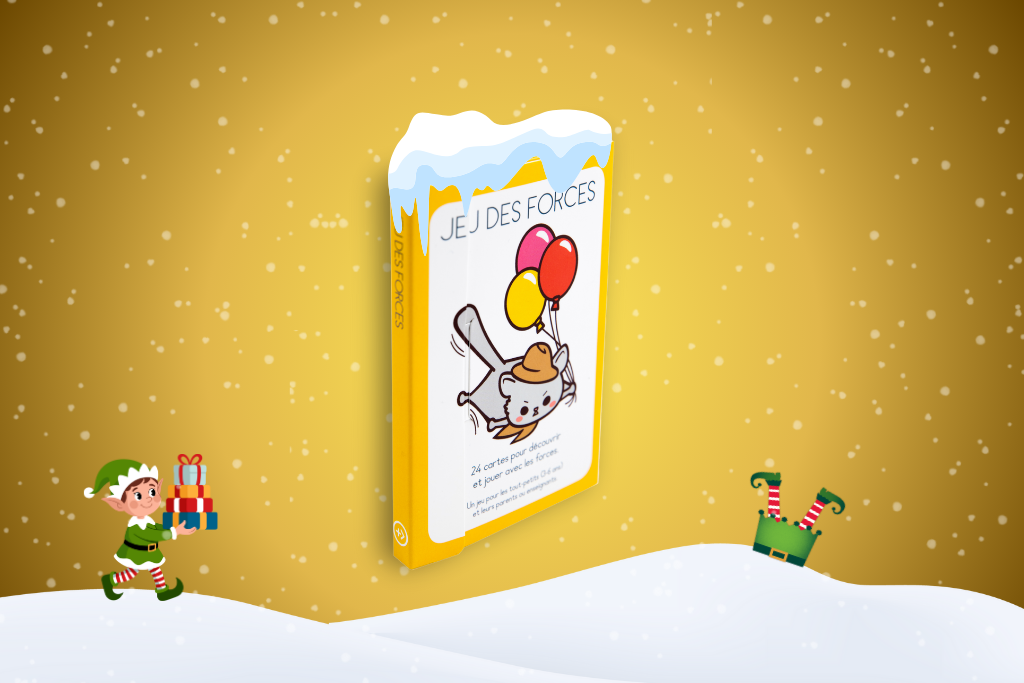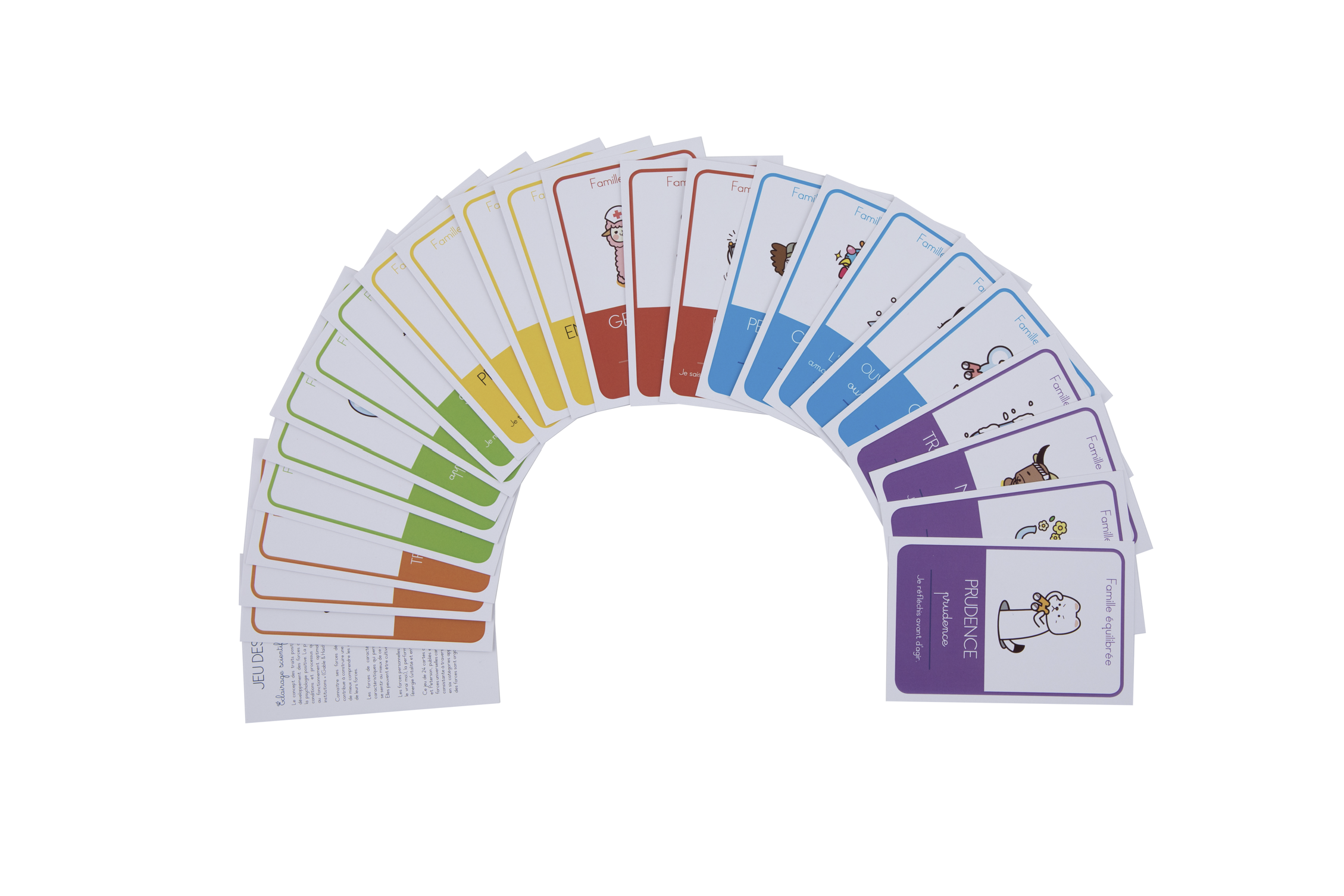
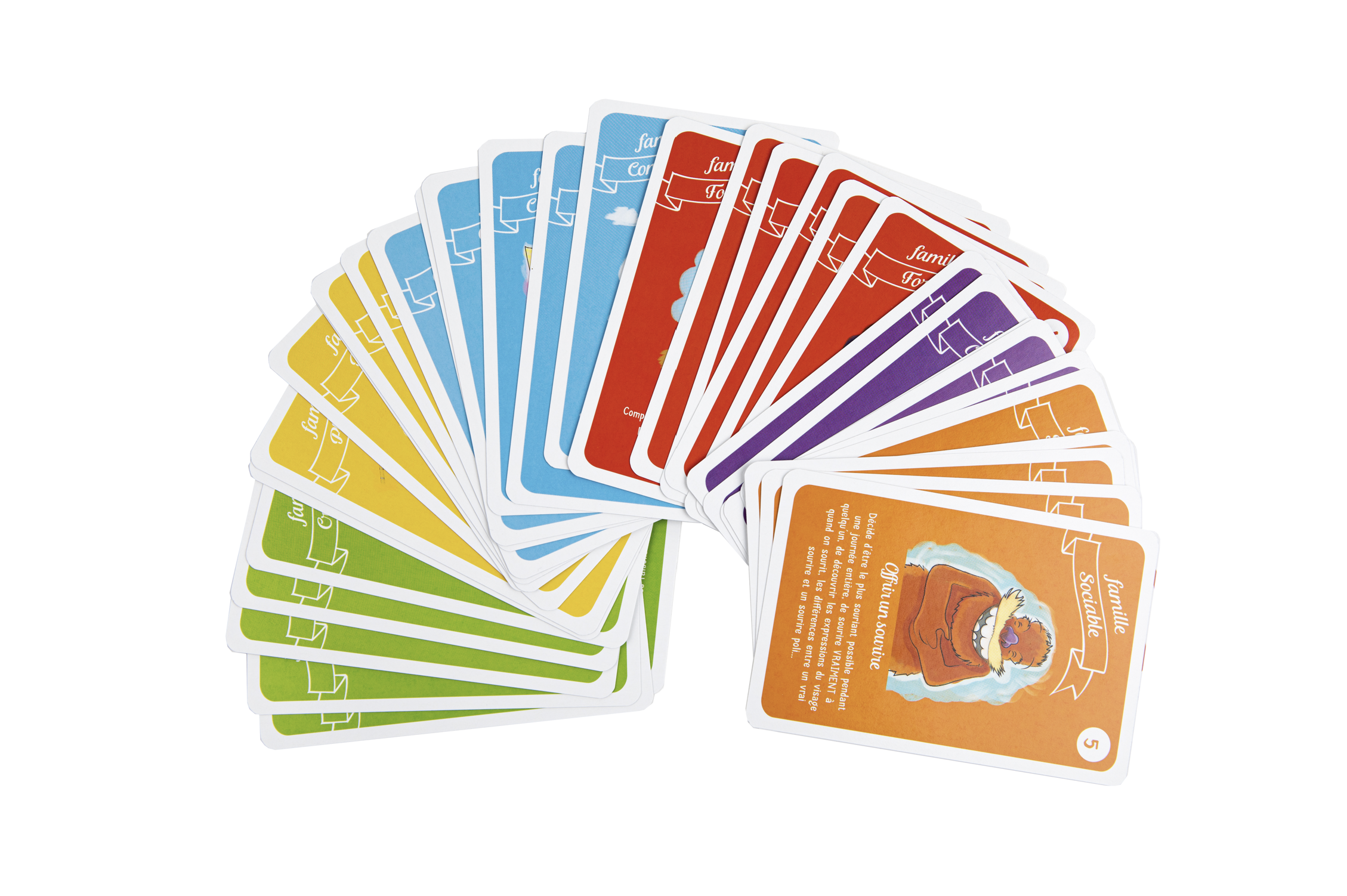
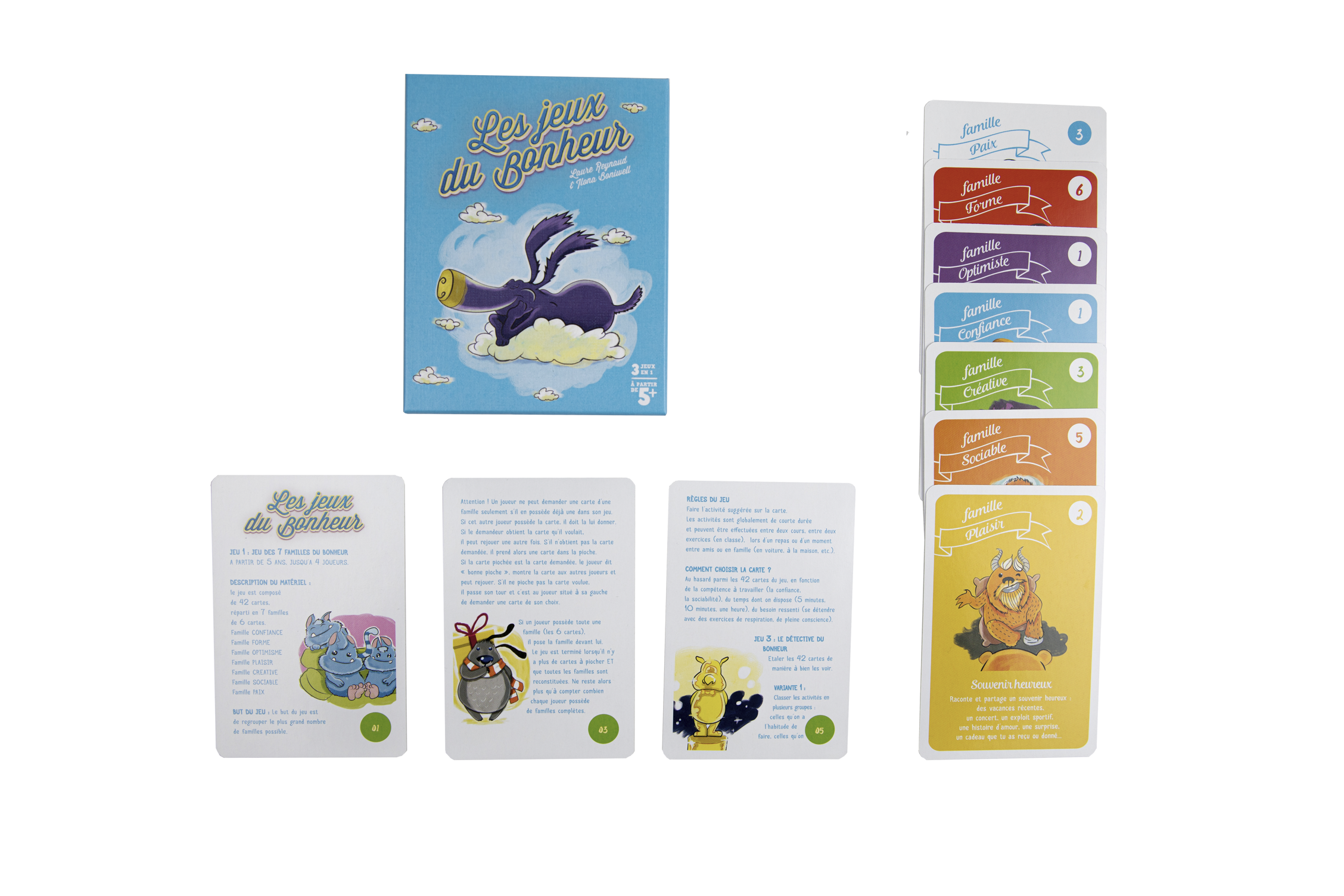
Happiness Box
Learn happiness skills while having fun. Help your children or students develop the skills for lasting happiness AND build a positive climate in your family or classroom.
Based on the latest scientific contributions of positive psychology, this 3-in-1 card game allows you to develop psycho-social skills in a fun and practical way.
The game of happiness, like the game of 7 families, the happiness detective or a little moment to share, are suitable for all ages, all contexts and needs felt or expressed.
With these 42 cards, you will learn to move, to savor, to practice mindfulness, to make choices, to express your emotions, to identify your strengths, to trust, to see the glass half full, to build respectful and peaceful relationships, etc.

Product Description
“The Happiness Game” can be used with different age groups, in different contexts, and applied to a variety of needs. It consists of 42 cards, divided into 7 families of 6 cards each. Children can learn strategies from members of the CONFIDENCE, FITNESS, OPTIMISTIC, FUN, CREATIVE, SOCIABLE, or PEACE families.
The Happiness Game was developed by Dr. Ilona Boniwell, a researcher and practitioner in positive psychology, and Laure Reynaud, a teacher with 18 years of experience.
Who is it for?
“The Game of Happiness” is designed for preschool and elementary school children.
However, we have found that adults can have as much, if not more, fun than children when the game is used during a session or during dinner.
Happiness games can be used in a family setting or as an educational and facilitation tool.
Its use
Like a classic game!
- Happy Families / Go Fishing
One player, chosen at random, deals 7 cards to all players, one by one. The remaining cards form the pile.
The person to the dealer's left starts the game. If they have at least one card from a suit, they can try to complete it by asking any player for a specific card they don't have but want. That's why they say: "In the SHAPE suit... I want card 3. Come on, let's dance...". Be careful, a player can only ask for a card from a particular suit if they already have one in their hand.
If the other player has the card, they must give it to them. If the asking player gets the card they wanted, they can play again. If they don't get the card they asked for, they must then draw the top card from the pile. If the card drawn is the one they asked for, the asker says "draw," shows it to the other players, and gets another turn. If the card drawn is not the one they wanted, the turn now passes to the player on their left, who can ask for the card they want.
If a player has a complete family (all 6 cards), they place all the cards in the family in front of them. The game ends when there are no more cards in the pile and each of the families is grouped together. All that remains is to count the number of complete families belonging to each player AND try some of the activities described.
As an intervention in positive psychology:
- A moment to share
Complete the activity suggested on the card. Activities are generally short and can be done between lessons, between exercises (in class), during a meal, or at a time with friends or family (in the car, at home, etc.).
How to choose the card or activity? Randomly from the 42 cards in the deck, depending on the skill to be worked on (confidence, sociability, etc.), the time available (5 minutes, 10 minutes, one hour) or even the objective of the activity itself (example: relaxing through breathing exercises, mindfulness exercises, etc.)
As a training activity
- Family hunting
Depending on the size of the group, each participant receives between 1 and 3 cards, each from a different family. Their task is to collect cards from the same family (by exchanging them with others) and then find the members of their own family. When the whole family gets together, they must first complete all the exercises on their cards and then prepare a fun presentation about their family for other people, showing them some of the exercises.
Click here to watch a video showing how to use The Happiness Box
“The Happiness Game” can be used with different age groups, in different contexts, and applied to a variety of needs. It consists of 42 cards, divided into 7 families of 6 cards each. Children can learn strategies from members of the CONFIDENCE, FITNESS, OPTIMISTIC, FUN, CREATIVE, SOCIABLE, or PEACE families.
The Happiness Game was developed by Dr. Ilona Boniwell, a researcher and practitioner in positive psychology, and Laure Reynaud, a teacher with 18 years of experience.
“The Game of Happiness” is designed for preschool and elementary school children.
However, we have found that adults can have as much, if not more, fun than children when the game is used during a session or during dinner.
Happiness games can be used in a family setting or as an educational and facilitation tool.
Like a classic game!
- Happy Families / Go Fishing
One player, chosen at random, deals 7 cards to all players, one by one. The remaining cards form the pile.
The person to the dealer's left starts the game. If they have at least one card from a suit, they can try to complete it by asking any player for a specific card they don't have but want. That's why they say: "In the SHAPE suit... I want card 3. Come on, let's dance...". Be careful, a player can only ask for a card from a particular suit if they already have one in their hand.
If the other player has the card, they must give it to them. If the asking player gets the card they wanted, they can play again. If they don't get the card they asked for, they must then draw the top card from the pile. If the card drawn is the one they asked for, the asker says "draw," shows it to the other players, and gets another turn. If the card drawn is not the one they wanted, the turn now passes to the player on their left, who can ask for the card they want.
If a player has a complete family (all 6 cards), they place all the cards in the family in front of them. The game ends when there are no more cards in the pile and each of the families is grouped together. All that remains is to count the number of complete families belonging to each player AND try some of the activities described.
As an intervention in positive psychology:
- A moment to share
Complete the activity suggested on the card. Activities are generally short and can be done between lessons, between exercises (in class), during a meal, or at a time with friends or family (in the car, at home, etc.).
How to choose the card or activity? Randomly from the 42 cards in the deck, depending on the skill to be worked on (confidence, sociability, etc.), the time available (5 minutes, 10 minutes, one hour) or even the objective of the activity itself (example: relaxing through breathing exercises, mindfulness exercises, etc.)
As a training activity
- Family hunting
Depending on the size of the group, each participant receives between 1 and 3 cards, each from a different family. Their task is to collect cards from the same family (by exchanging them with others) and then find the members of their own family. When the whole family gets together, they must first complete all the exercises on their cards and then prepare a fun presentation about their family for other people, showing them some of the exercises.
Click here to watch a video showing how to use The Happiness Box

